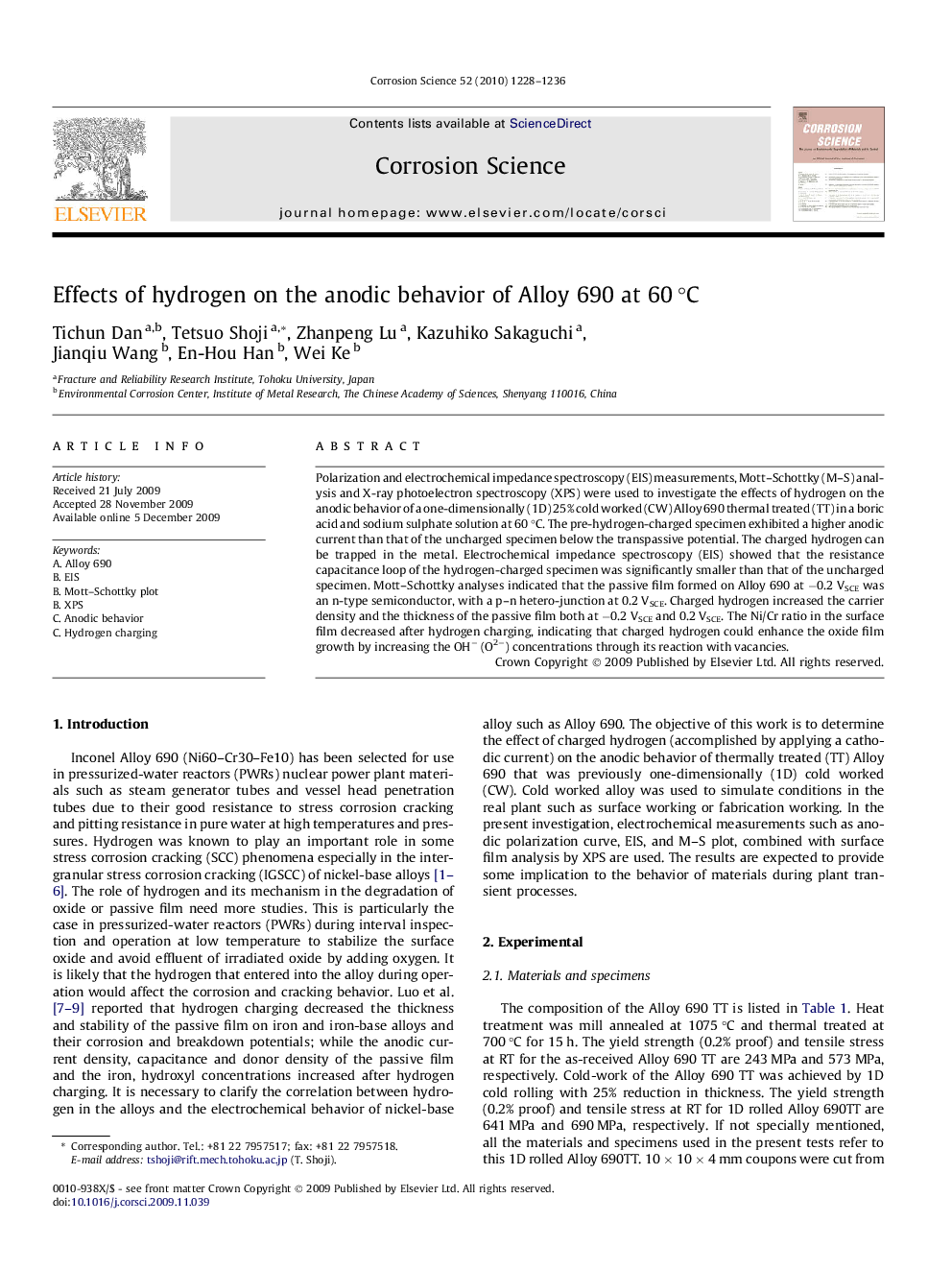| Article ID | Journal | Published Year | Pages | File Type |
|---|---|---|---|---|
| 1470991 | Corrosion Science | 2010 | 9 Pages |
Polarization and electrochemical impedance spectroscopy (EIS) measurements, Mott–Schottky (M–S) analysis and X-ray photoelectron spectroscopy (XPS) were used to investigate the effects of hydrogen on the anodic behavior of a one-dimensionally (1D) 25% cold worked (CW) Alloy 690 thermal treated (TT) in a boric acid and sodium sulphate solution at 60 °C. The pre-hydrogen-charged specimen exhibited a higher anodic current than that of the uncharged specimen below the transpassive potential. The charged hydrogen can be trapped in the metal. Electrochemical impedance spectroscopy (EIS) showed that the resistance capacitance loop of the hydrogen-charged specimen was significantly smaller than that of the uncharged specimen. Mott–Schottky analyses indicated that the passive film formed on Alloy 690 at −0.2 VSCE was an n-type semiconductor, with a p–n hetero-junction at 0.2 VSCE. Charged hydrogen increased the carrier density and the thickness of the passive film both at −0.2 VSCE and 0.2 VSCE. The Ni/Cr ratio in the surface film decreased after hydrogen charging, indicating that charged hydrogen could enhance the oxide film growth by increasing the OH− (O2−) concentrations through its reaction with vacancies.
